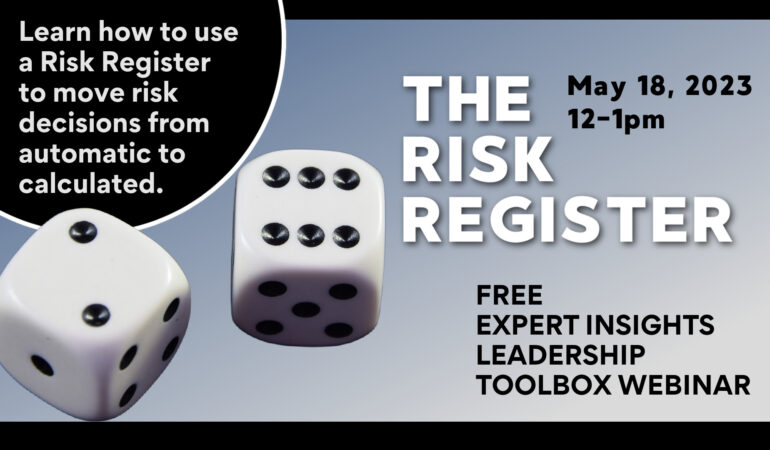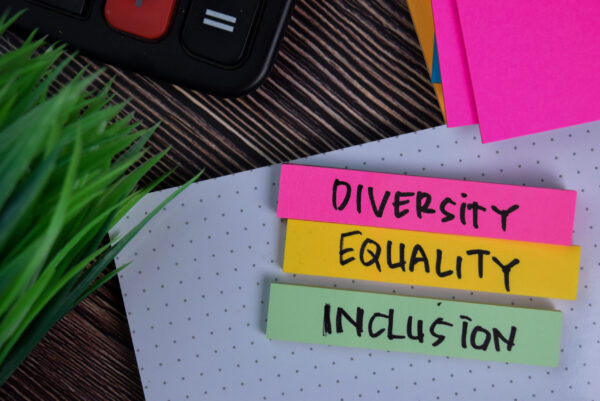The Risk Register | Past Leadership Toolbox Expert Insights Webinar
Audience: Decision makers (Large or Small) for organizations on resources, projects, processes, and strategy.
Description:
Every decision you make (or delay making or avoid) carries an element of risk.
Psychology Today’s latest research states that you make 35,000 decisions each day! That equates to about 2000 decisions per hour, and in an 8-hour work day that is 16,000 decisions related to work daily! You are already informally, subconsciously, or automatically calculating risk for your job 16,000 times each day. You could spend your whole day analyzing risk, or you could determine when to move those risk decisions from being automatic to being calculated. This Leadership Toolbox session will show you how and when to use a risk register. It is easy, and like any good tool, it will not only impress your leaders and colleagues, it will also provide an opportunity for collaboration and input.
Takeaways:
- Learn to build a risk register
- Determine when to use a risk register
- Understand the risk of doing nothing
ABOUT THE PRESENTER: You know Beth Schaefer as the host of the Expert Insights series, but she also manages the staff of the Institute for Professional Development at Metro State as part of the university’s leadership team. Before her role at Metro State, Beth was the director of an area learning center serving grades 7 – 12. In this role, she led teachers, staff, students, and parents through experiential learning and the changes that occurred during those secondary education years. In her leadership roles, Beth mostly navigates change that is generated by external forces (economy, pandemic, legislation) to meet the needs of customers while lacking the time, money, and resources that would make those changes easier to lead.


